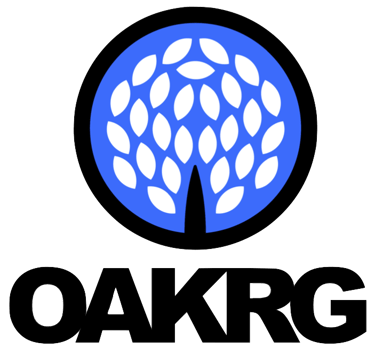The Role of Convertible Debt in Gold Mining Companies Going Public
Taking a mining company public can provide numerous advantages that significantly enhance its operations and market presence. One of the primary benefits is increased visibility within the investment community. A public listing draws attention from a broader range of potential investors, including institutional funds and retail investors. This increased visibility can result in heightened interest in the company and its projects, leading to enhanced funding opportunities and greater overall market awareness.
7/9/20255 min read
Understanding Convertible Debt in the Mining Sector
Convertible debt is a financial instrument that allows investors to loan money to a company in exchange for the option to convert that debt into equity at a future date. This form of financing has gained traction in the mining sector, particularly among gold mining companies, due to its unique advantages in a capital-intensive industry. The volatile nature of commodity prices, alongside the significant risks associated with exploration and operational phases, makes conventional financing less appealing, leading many mining companies to explore convertible debt as a viable alternative.
The appeal of convertible debt lies not only in its potential for lower interest rates compared to traditional debt but also in its capacity to attract investors who are eager for equity upside. In an industry characterized by heavy investment in exploration and extraction technologies, convertible debt provides a way for gold mining companies to secure necessary funding without immediately diluting ownership. Investors often view this arrangement favorably since they can capitalize on potential equity appreciation if the company's projects prove successful. Furthermore, this financial structure can enhance a company’s balance sheet, reducing immediate cash outflow and allowing more capital to be directed toward active mining operations or technological advancements.
However, there are inherent disadvantages to consider. The conversion of debt into equity can lead to substantial shareholder dilution, particularly in scenarios where multiple funding rounds occur. Additionally, if a mining company struggles to achieve its projected outcomes, the risk of conversion can pose significant challenges to its financial integrity. Consequently, gold mining companies must carefully evaluate their capital structure and the implications of convertible debt financing. This strategic approach enables them to balance the risks and costs associated with exploration and production, securing necessary funding while maintaining flexibility throughout project development.
The Benefits of Going Public for Mining Companies
Taking a mining company public can provide numerous advantages that significantly enhance its operations and market presence. One of the primary benefits is increased visibility within the investment community. A public listing draws attention from a broader range of potential investors, including institutional funds and retail investors. This increased visibility can result in heightened interest in the company and its projects, leading to enhanced funding opportunities and greater overall market awareness.
Access to capital is another critical advantage of going public. By issuing shares, mining companies can raise substantial funds to finance exploration, development, and operational expansions. These funds can be vital for gold mining firms that require significant investment for equipment, technology, and infrastructure to achieve efficiency and sustainability in their operations. Furthermore, public companies may have the opportunity to pursue additional financing options, such as convertible debt, which can stimulate further growth and development.
Enhanced credibility with stakeholders is also a significant benefit associated with going public. Being listed on a stock exchange often lends a level of legitimacy and transparency to operations, which can positively influence relationships with regulators, suppliers, and customers. Stakeholders may perceive public companies as more stable and reliable than privately-held firms, which can lead to better terms in contracts and partnerships.
Moreover, publicly-traded mining companies often experience better shareholder valuations. The liquidity that comes along with being publicly traded can result in a more accurate reflection of the company's worth. Investors are generally willing to pay a premium for publicly-listed shares, especially if they perceive the company's gold mining ventures as promising. Successful examples of public offerings in the mining sector can be seen in various cases where companies have transformed into industry leaders, thereby reinforcing the tangible benefits of going public.
Navigating the Challenges of Going Public in the Gold Mining Industry
Going public can be a transformative step for gold mining companies, enabling them to raise capital and enhance their visibility. However, this journey is fraught with challenges and regulatory hurdles that must be meticulously navigated. One significant hurdle is the adherence to regulatory requirements, which vary significantly depending on the jurisdiction. For instance, gold mining companies must ensure compliance with the guidelines set forth by governing bodies such as the Securities and Exchange Commission (SEC) in the United States or similar entities globally. These regulations often require comprehensive disclosures regarding financial performance, environmental impact, and operational robustness.
Market conditions also play a crucial role in the success of an initial public offering (IPO). The gold market is influenced by various external factors, including fluctuating gold prices, geopolitical stability, and global economic conditions. For instance, a downturn in gold prices may deter potential investors and complicate the public offering process. Conversely, a strong market could enhance interest, making it vital for gold mining companies to time their IPOs strategically to capitalize on favorable conditions.
Moreover, a well-articulated business plan is essential for potential investors, outlining the company's growth strategy and how it plans to tackle the inherent challenges of the mining industry. This plan should clearly communicate the company's vision, the viability of its projects, and risk management measures in place. Investors are likely to be wary of companies that do not demonstrate a thorough understanding of the market landscape or lack a clear path to profitability.
In conclusion, gold mining companies must carefully consider these factors when preparing to go public. Proper planning and execution can not only facilitate compliance with regulatory requirements but also enhance investor confidence, ultimately paving the way for a successful public offering.
Strategies for Maximizing Value Through Convertible Debt During IPO
Gold mining companies seeking to go public can leverage convertible debt as a strategic tool for enhancing their value in the initial public offering (IPO) phase. One effective strategy involves carefully structuring the convertible debt to align with the company's growth projections and financial goals. Companies should consider terms that are favorable to both the issuer and investors. For instance, setting a conversion price that reflects future growth expectations can attract investors who are optimistic about the company's potential. This approach not only incentivizes investment but also enhances the overall valuation during the IPO.
Moreover, clear and transparent communication with investors is critical during this process. Companies must articulate the benefits of convertible debt, such as lower interest rates compared to traditional debt instruments and the potential for equity conversion, which can be attractive in a bullish market. Regular updates on the company's progress, operational efficiency, and market positioning can foster investor confidence. By engaging with potential investors through roadshows, presentations, and one-on-one meetings, companies can create a stronger narrative around their growth strategy and the pivotal role convertible debt plays in supporting that trajectory.
Utilizing the proceeds from convertible debt effectively is another key consideration for maximizing value. Companies should outline a comprehensive plan for allocating these funds, focusing on initiatives that drive growth, such as exploration projects, technological advancements, or operational optimizations. Investments in these areas can lead to enhanced production and increased reserves, ultimately bolstering the company’s financial performance. Additionally, convertible debt can help mitigate risks associated with volatile gold prices, providing a safety net for companies navigating the uncertainties of the market. By enhancing their balance sheet through convertible debt, gold mining companies can position themselves attractively for new investors, fostering a robust environment for sustainable growth in the public markets.


Get in touch
Contact OAKRG today to learn how capital solutions can help your business improve cash flow, reduce financial strain, and strengthen working relationships. Let us show you how our flexible financing solutions can turn your accounts into a strategic advantage.
